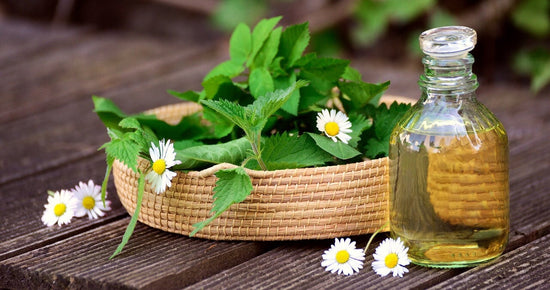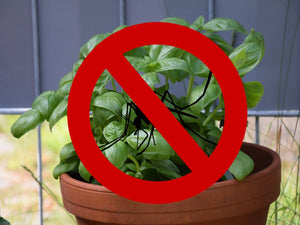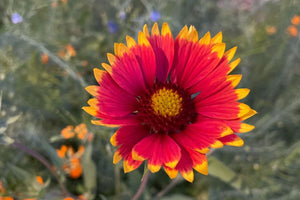Capture the Health Benefits of Growing Purslane Plants from Seed
PurslanePurslane is a succulent green vegetable that you need to be growing! High in vitamins and minerals, including omega-3 fatty acids, this easy-to-grow plant deserves to be held in higher esteem for feeding our planet.

Growing Purslane Plants
What is Purslane?
Purslane is a very nutritious, easy-to-grow succulent plant. It is also known as Portulaca and hogweed. This annual plant has been naturalized all over the world and is used in traditional medicine.
Purslane is edible and has a salty, sour, and nutty flavor. It is a popular plant for foraging because of its high nutritional content. It is an excellent source of omega-3 fatty acids without any cholesterol—more omega-3s than any other green plant. Purslane is also rich in vitamins A and C, potassium, magnesium, iron, and calcium.
But you don’t have to save purslane for hikes. You can easily grow it in your own garden. Just keep it contained to where you want it. And by growing it on purpose, you won’t accidentally eat spurge!
How to Grow Purslane from Seed
Purslane is fast-growing and easy to start from seed. It is a warm-weather plant and frost-tender. Plan to start seeds indoors two to four weeks before transplanting. You can also directly sow purslane seeds after all danger of frost has passed. Choose a sunny location with well-drained soil. Purslane readily reseeds itself, so harvest it young or remove flowers to prevent spreading.
Tips for fail-proof purslane seed germination
Sow seeds outdoors after all danger of frost has passed. Seeds will sprout when the soil temperature is warm enough for germination.
Sow seeds indoors 2 to 4 weeks before transplanting.
Light is required for purslane seed germination. Press seeds into soil for good contact, but don’t cover.
Soil temperature of 70 to 85ºF will increase germination rates.
Keep seeds warm and moist; they will germinate in 7 to 14 days.
Transplant indoor seedlings after the last spring frost. Space seedlings 10 to 12 inches apart.

How to Grow Purslane Plants
Common Purslane (Portulaca oleracea), also known as hogweed or pigweed, can be grown as a heat-tolerant ground cover in areas with full sun. Purslane will even thrive in 90 to 100ºF temperatures.
It has bright yellow flowers that will only open on hot, sunny days. The juicy leaves are edible and rich in omega-3 fatty acids.
When well watered, purslane plants will spread along the ground and grow up to 16 inches tall. Space plants 10 to 12 inches apart to give them room to spread as they grow.
Growing purslane on purpose, for ground cover, or for food will create a completely different experience than trying to eradicate it. It is another one of those plants that can be seen either as a weed or a treasure.
Because of its high nutritional value, purslane can be a beneficial plant to grow for health reasons as well as food security. It would fit in a permaculture garden plan. Purslane is also an excellent choice in xeriscape gardens.
Although it’s an annual, purslane can produce thousands of seeds. These seeds can stay dormant for centuries and then sprout when they have optimal conditions, which are heat, light, and moisture.
When pieces of the plant are broken off, they can grow roots. If you want to eliminate the plant, you must remove the entire plant, including all pieces.
However, purslane's natural ability to persevere in all conditions makes it so easy to grow. To keep it from spreading, you’ll need to remove the purslane flowers. You can also trim it back and remove any broken pieces, as they can easily sprout roots.
Purslane is self-fertile, so even though bees visit the flowers, seeds develop without help from pollinators.
Sun
Purslane is a warm-weather plant and loves full sun. It will grow slowly in the shade and stay closer to the ground.
Soil
Purslane isn’t picky about what kind of soil it will grow in. From sandy to clay, it will adjust, although heavy clay can lead to root rot. Purslane also thrives in a wide range of soil pH.

Water
Because purslane is a succulent plant, it can store water, making it drought-resistant. However, if you grow it for eating, the taste will be better if it is not stressed by drought.
Be careful of watering too much, as this can lead to fungal diseases.
Fertilizing
Adding additional fertilizer isn’t necessary for growing purslane. Although this leafy green plant does appreciate extra phosphorus, you don’t usually need to add more.
Purslane Pests and Diseases
While purslane generally doesn’t have problems with pests, there are two that are specific to purslane.
Purslane sawfly (Schizocerella pilicornis) is a leaf-mining bug that only attacks purslane. Source: bugguide.net
A leafminer weevil, Hypurus bertrandiperris, will also target purslane and damage or kill the plants.
If you see the signs of these bugs, you will need to remove leaves and destroy any adults and eggs.

Harvesting Purslane
Purslane takes 50 to 60 days to be ready for harvesting. Harvest time is when you’ll appreciate that you’ve grown your own instead of foraging for purslane. You won’t have to worry about questionable growing conditions; you can harvest as much and whenever you want.
The flavor of purslane varies based on what time of day it is harvested. For extra tart, more acidic tasting purslane harvest in the early morning. For a less acidic flavor, harvest in the evening. For more information on how the plant does this, click here. Source: University of Wisconsin - Division of Extension
When harvesting purslane, you can cut the entire plant or leave some to continue growing. Young, tender leaves and stems are best.
Purslane is usually eaten raw right after harvesting. It can also be cooked, and some find it excellent when pickled.
Purslane FAQs
Does Purslane come back every year?
Purslane is an annual that will die after a hard frost. But if it has dropped seeds, those will sprout when the soil warms up in the spring. Purslane will self-seed, and the seeds can stay viable for decades.
Where does purslane grow best?
Purslane plants are found growing all over the United States. It can grow in all kinds of soil and thrives in full sun.
Does purslane spread easily?
Purslane’s love-it-or-hate-it debate arises because of how easily it can spread. One plant produces thousands of seeds that can come up again for years. Also, broken pieces of purslane plant can re-root.
Is purslane an annual or perennial?
Purslane is an annual, but because it can self-seed and reroot, it can appear like a perennial.
Grow Purslane From Seed and Harvest All the Health Benefits!
If you want a healthy, easy-to-grow green plant, add purslane and go foraging in your own backyard. This incredibly healthy succulent plant will give you an excellent, sustainable source of omega-3s and other essential vitamins and minerals.
Start growing purslane from seed with Sow Right Seeds.
Forget Foraging! Purslane is a Powerhouse of Nutrition You Can Grow.






Leave a comment